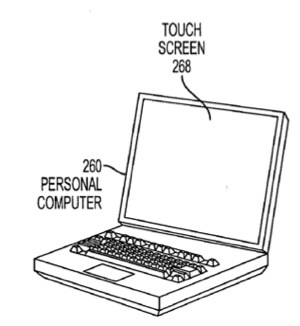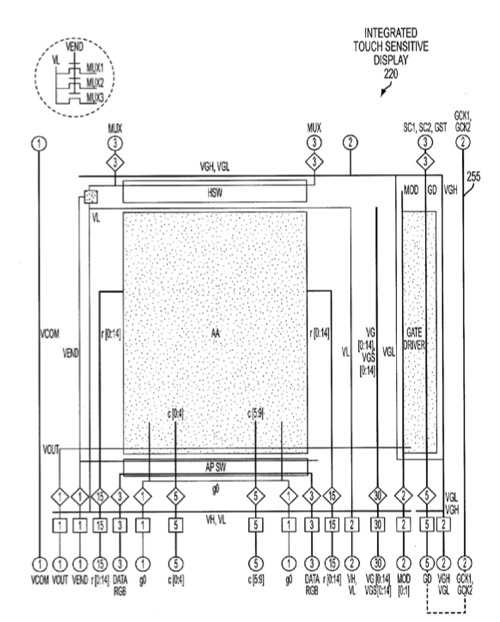An Apple patent (number 20100253638) -- which first appeared in 2009 -- underscores the fact that the company is working on touchscreen Macs. The patent, "Integrated Touch Sensitive Display Gate Driver," describes a circuit that would switch between display and touch modes, enabling and disabling an integrated touch sensitive display when necessary.
A gate driver circuit for switching gate line voltage supplies between display and touch modes is disclosed. The circuit can include one or more switches configured to switch one or more gate lines of an integrated touch sensitive display between a display mode and a touch mode. During touch mode, the circuit can be configured to switch the gate lines to connect to a more stable voltage supply. The circuit can also be configured to reduce or eliminate interference from the display circuitry to the touch circuitry that could affect touch sensing. During display mode, the circuit can be configured to switch the gate lines to connect to a fluctuating voltage supply. The inventors are Marduke Yousefpor, Shih Chang Chang, Kevin J. White and Steven Porter Hotelling.
Here's Apple's background and summary of the invention: "Many types of input devices are available for performing operations in a computing system, such as buttons or keys, mice, trackballs, touch sensor panels, joysticks, touch pads, touch screens, and the like. Touch screens, in particular, are becoming increasingly popular because of their ease and versatility of operation as well as their declining price. Touch screens can include a touch sensor panel, which can be a clear panel with a touch sensitive surface, and a display device such as a liquid crystal display (LCD) that can be positioned behind the panel so that the touch sensitive surface can substantially cover the viewable area of the display device.
"Touch screens can generally allow a user to perform various functions by touching or near touching the touch sensor panel using one or more fingers, a stylus or other object at a location dictated by a user interface (UI) including virtual buttons, keys, bars, displays, and other elements, being displayed by the display device. In general, touch screens can recognize a touch event and the position of the touch event on the touch sensor panel, and the computing system can then interpret the touch event in accordance with the display appearing at the time of the touch event, and thereafter can perform one or more actions based on the touch event.
"Because display and touch capabilities can impose different requirements on the touch screen, it can be challenging to mesh those requirements so that the touch screen can perform both display and touch capabilities effectively and efficiently."
"This relates to an integrated touch sensitive display having switchable gate driver circuitry for switching between gate line voltage supplies during display and touch modes of the display. The gate driver circuitry can include one or more switches configured to switch to a voltage supply from an LCD driver during display mode for displaying image and/or graphics data and to switch to a voltage supply from a touch controller during touch mode for reducing interference of the LCD voltage supply with touch circuitry during touch sensing.
"In some embodiments, the voltage from the touch controller during touch mode can be ground voltage. In some embodiments, the gate driver circuitry can include a feedback loop and logic state circuitry to reduce interference from display circuitry during touch mode. In some embodiments, the gate driver circuitry can include clock circuitry to disable the display clocks during touch mode so as to reduce interference from the clock signals.
"In some embodiments, the gate driver circuitry can be adjacent to or in close proximity to an active display/touch area of the display. In some embodiments, the gate driver circuitry can be distant from the active area with conductive lines therebetween to shield the active area from the gate driver as a further interference reduction measure. The switchable gate driver circuitry can advantageously integrate display and touch circuitry in a more efficient effective manner, thereby realizing cost and power savings."














